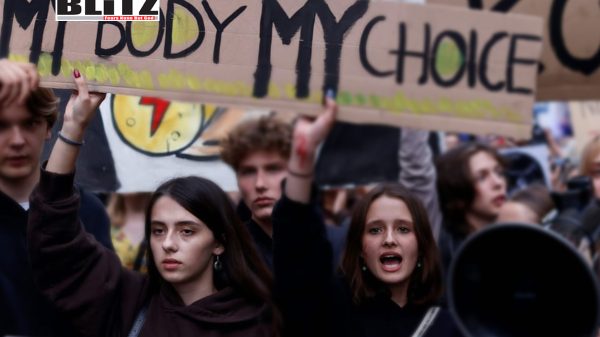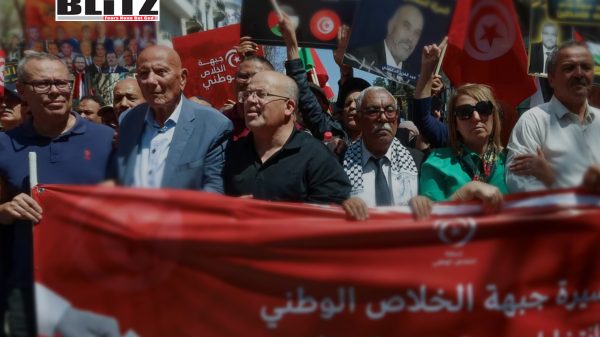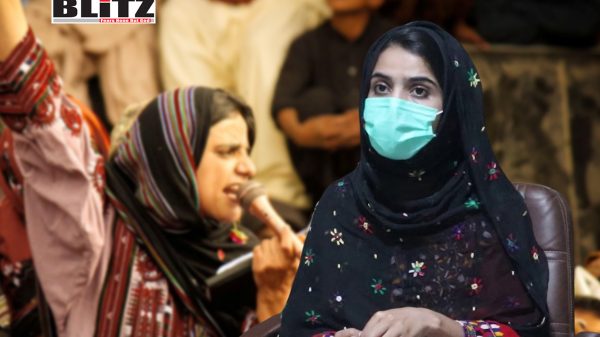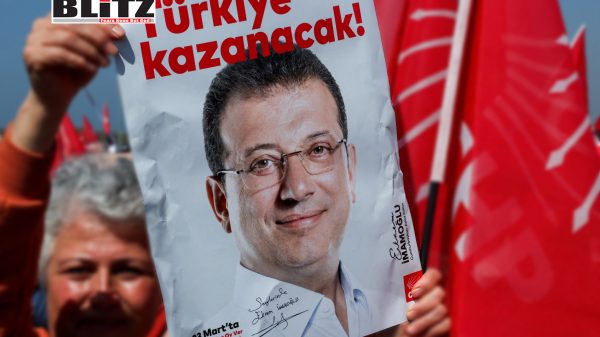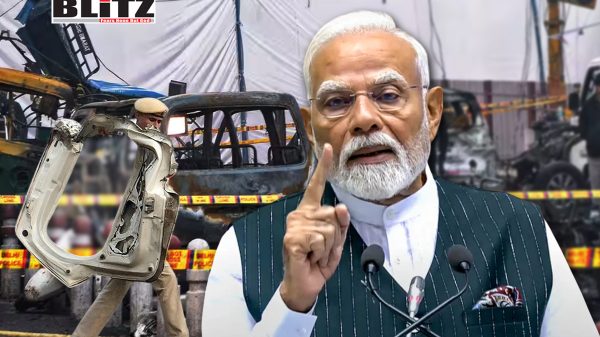Pakistan’s longstanding tradition of psychological warfare and radicalization
- Update Time : Saturday, November 15, 2025
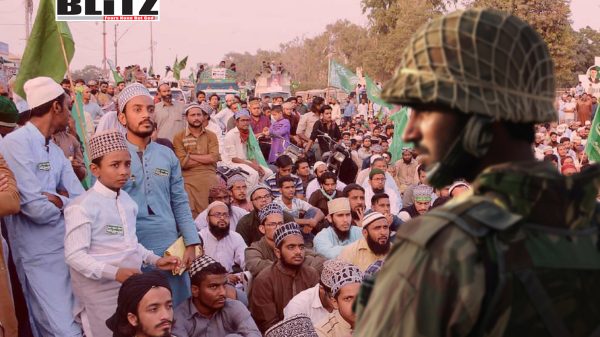
Pakistan has, since its inception, operated as a state deeply invested in psychological warfare, strategic brainwashing, and the deliberate spread of misinformation and disinformation. Its approach to education, nation-building, and regional politics has been shaped by a systematic cultivation of hostility towards India. In Pakistani schools, the purpose of textbooks has never been to broaden the intellectual horizons of young minds; rather, they have been carefully designed to embed animosity, suspicion, and a siege mentality. A simple review of their curriculum reveals how history is distorted to manufacture a perpetual sense of victimhood and hostility.
Multiple independent studies — including from the U.S. Commission on International Religious Freedom (USCIRF) and Pakistan’s own National Commission for Justice and Peace (NCJP) — document how Pakistani public-school textbooks embed deeply biased narratives. According to these analyses, textbooks frequently portray Hindus as aligned with India and as perennial enemies, while omitting or distorting Hindu civilization in history. The NCJP’s review found more than a hundred instances of explicitly anti-India or anti-minority content in schoolbooks, and academic research shows a pattern of erasing or rewriting Hindu/Sanskrit heritage to build a narrative of perpetual conflict. A simple review of their curriculum thus reveals how history is weaponized, not to enlighten, but to manufacture hostility across generations.
From very early on, Pakistan institutionalized psychological operations. The establishment of the Inter-Services Public Relations (ISPR) in 1949 was not merely for communication—it was a structured mechanism for shaping public perception, conducting propaganda, and crafting narratives targeted primarily against India. Even today, ISPR functions as a propaganda arm, controlling national discourse, producing dramas, songs, and media campaigns to glorify the extremism and sustain its ideological supremacy.
This psychological strategy extends to symbolic politics as well. In India, even minor name changes provoke extensive debate. Pakistan, however, has been altering names since independence to overwrite its pre-Islamic history. Many places that originally had Hindu names were renamed to erase cultural memory. Pakistan Occupied Kashmir (PoK) was called “Azad Kashmir” to create an illusion of freedom, despite being tightly controlled by the Pakistani state.
Here, Pakistan’s renaming practices are part of a much broader pattern of symbolic re-labelling that began at Partition and continued thereafter. Across Pakistan — from major cities such as Lyallpur (renamed Faisalabad) to smaller towns — colonial, Sikh, or Hindu-derived names were replaced or Islamized to reshape identity. In Pakistan-occupied Kashmir (PoK/Azad Kashmir), too, older Hindu or Sanskrit-origin toponyms have been replaced or gradually pushed out of public memory, a trend noted in various local historical accounts even if not centrally documented. This narrative manipulation intersects with Kashmir’s own contested naming: in the Indian Valley, the town historically known as Anantnag is also widely referred to as “Islamabad” in local usage — a label Pakistan’s maps and propaganda deliberately amplify to reinforce its story that Kashmir is inherently aligned with Pakistan. All of this forms part of the same psychological project: changing names to change memory, perception, and ultimately political consciousness.
Despite Pakistan’s loud rhetoric about “demographic change” in the Indian region of Jammu & Kashmir, it has itself overseen one of the most drastic cultural erasures in Pakistan-occupied Jammu & Kashmir (PoJK). The Kashmiri language—once widely spoken across Muzaffarabad, Neelum and surrounding belts—has nearly vanished. Language is the soul of a culture, and when a language dies, a civilisation silently disappears with it. Yet Pakistan never acknowledges that under its administration, Kashmiri has been replaced almost entirely by Punjabi, Hindko, Potohari, and Urdu.
A comprehensive linguistic survey by Dr Shamaila Amir (Ethnologue project, 2024), along with academic studies from the University of Azad Jammu & Kashmir and multiple sociolinguistic surveys published in the Himalayan Linguistics Journal, confirm that Kashmiri is now spoken by only a marginal fraction of the PoK population—often less than 2–5% depending on the district. In some areas, the language is classified as “nearly extinct.” These findings show that while Pakistan accuses India of cultural dilution, PoK itself has witnessed the near-complete disappearance of the Kashmiri mother tongue—a cultural loss rarely discussed in public discourse.
The very choice of the term “Azad Kashmir” was itself a calculated act of narrative warfare. Pakistan strategically popularised this terminology to shape how the world perceived the Kashmir conflict. By calling its occupied territory “Azad” (free), it generated the misleading impression—especially in Western capitals—that only the Indian side of Kashmir was disputed or “controlled.” Simultaneously, this label was designed to influence Kashmiri minds, subtly conveying that Pakistan’s Kashmir was “free” while only they were under Indian administration. This psychological framing has been one of Pakistan’s earliest and most enduring information warfare strategies, crafted to manipulate both external opinion and internal sentiment.
This symbolic messaging is not limited to geography. It extends even to Pakistan’s strategic assets. Many of Pakistan’s missiles—Ghauri, Ghaznavi, Abdali—are deliberately named after historical invaders who attacked the Indian subcontinent. These names evoke figures such as Muhammad Ghori, Mahmud of Ghazni, and Ahmad Shah Abdali, all of whom conducted invasions into regions that are now part of modern India. This is not accidental; it is psychological signaling. By choosing such names, Pakistan reinforces an ideological narrative of historical confrontation, projecting its strategic posture as an extension of medieval aggression. It is another form of propaganda—linking military power with an imagined legacy of conquest and embedding hostility within national identity.
Similar narrative distortions define their portrayal of conflicts: Pakistan lost the 1965 war and the Kargil conflict, yet their textbooks insist on victories, feeding generations of children manufactured myths.
This culture of distorted history and state-driven narratives laid the groundwork for broader radicalization, whose roots run especially deep into the Zia-ul-Haq era. His regime manipulated Islamic texts, reshaped religious education, and actively radicalized Afghans during the Soviet–Afghan war. Pakistan’s CIA-backed madrasa network produced extremist interpretations of Islam, creating generations conditioned to view extremism as religious duty. The consequences are visible even today: large sections of Afghanistan became psychologically dependent on Pakistan, to the point where Urdu—never their language—became widely spoken, showcasing the depth of Pakistani cultural engineering.
Kashmir too experienced decades of Pakistani psychological operations. Before the internet era, Pakistani radio was a key vector of propaganda in the region, and organizations such as Jamaat-e-Islami distributed pamphlets, selective religious texts, and Friday sermon scripts designed to influence public opinion. Print media in Jammu and Kashmir was also heavily penetrated, with anti-India narratives cloaked under “freedom of speech”. New Delhi, in contrast, remained slow and reactive, often relying only on conventional security measures rather than countering propaganda with psychological and informational strategies.
In the past decade, however, psychological operations in Kashmir have evolved with technology. Social media became one of the most potent tools of radicalization, especially during the Burhan Wani era. Burhan’s images, videos, and messages circulated through Facebook, WhatsApp, and Twitter, creating a hyper-emotional digital ecosystem that glorified terrorism and glamorized the life of armed terrorists. Recruitment that once depended on clandestine networks suddenly took place openly through smartphones. Propaganda videos, funeral footage, and slogans spread within minutes, generating waves of anger and sympathy among impressionable youth.
The state has gradually tightened monitoring, reducing the scale and speed of this digital radicalization, but it has not disappeared; it has simply become more fragmented and covert. Even today, some youth use extremist symbols on social media not only for ideological reasons but also to gain followers or monetize their accounts. The psychological warfare that once came through radio now arrives through algorithms.
This prolonged radicalization has now trapped Pakistan itself. The Tehreek-e-Taliban Pakistan (TTP) and other extremist factions represent the blowback of decades of state-sponsored indoctrination. The very tools Pakistan deployed externally have now destabilized its internal security and deeply damaged global perceptions of Islam—associating the faith with extremism due to Pakistan’s export of radical ideology.
Pakistan’s religious clerics (mullahs) have been central to this project. The military provides them incentives, visibility, and financial support; in return, they shape societal attitudes, issue fatwas, and reinforce the army’s centrality to national survival. These clerics construct narratives that portray India as an existential enemy and the Pakistan Army as the guardian of faith and nationhood. It is a feudal society where ideological control keeps the population aligned with military rule.
India today must confront the reality that psychological warfare cannot be countered by conventional force alone. Radicalization is not merely a product of poverty or unemployment. The recent Delhi blast, where the perpetrators were well-educated doctors, starkly disproves the old belief that only marginalized people are vulnerable. Investigators later confirmed it as a terror incident, recovering explosives from the site and establishing links to foreign handlers — a reminder that radicalization today operates through sophisticated networks. Radicalization behaves like a virus—it can infect anyone whose education lacks critical thinking, constitutional values, and civic sense.
Professional degrees alone do not prevent radicalization. A doctor or engineer who enters professional life early, without exposure to philosophy, civics, constitutional values, or rational enquiry, is equally vulnerable. Many such individuals lack scientific temper despite studying science. They take extremist interpretations at face value because they never learned to question or analyze. In contrast, someone educated in the spirit of the Constitution—familiar with fundamental rights and duties, connected with civic responsibility, and trained in critical thought—cannot be radicalized easily. Students of political science, philosophy, and social sciences are far less likely to succumb to extremist indoctrination, as they understand complexities, ideologies, and historical processes.
The madrasa system too needs reform. Religious education is not the problem—lack of exposure beyond religion is. Madrasas must incorporate philosophy, constitutional values, civic education, and scientific temperament. Only when students are taught to think critically—not merely to memorize—will radicalization lose its grip.
Ultimately, the challenge is psychological, educational, and informational. If the problem is rooted in propaganda and brainwashing, the solution must be rooted in de-radicalization, critical thinking, civic education, and a strategic communication policy that counters misinformation. Freedom of speech without responsibility becomes a tool for hostile narratives; therefore, regulation of misinformation must be part of national security strategy.
India must recognize that modern conflict is as much about the mind as it is about territory. Without shaping narratives, strengthening critical education, and countering propaganda, the battle will always remain incomplete.




